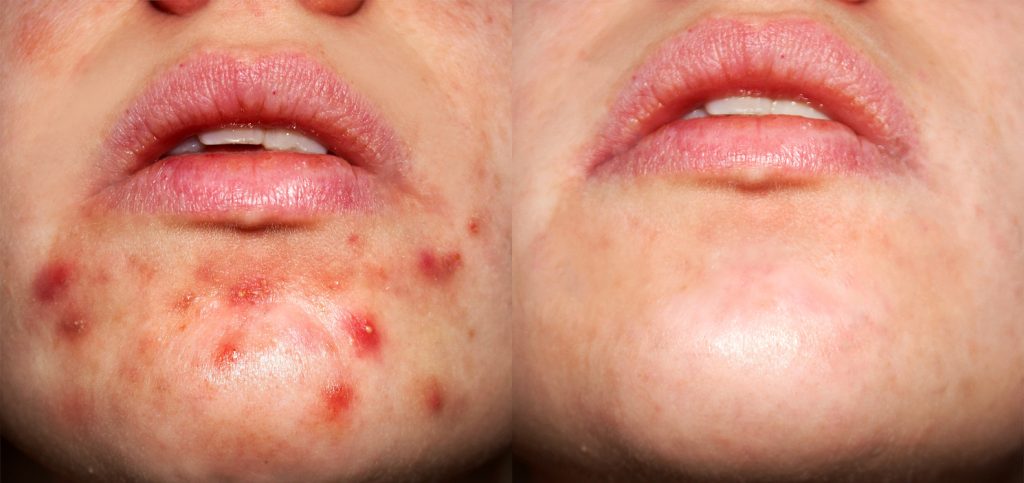New acne treatment guidelines from the American Academy of Dermatology (AAD) strongly recommend benzoyl peroxide, topical retinoids, topical antibiotics, and oral doxycycline.
“These guidelines provide important updates to the 2016 AAD acne guidelines, including discussion of new topical medications such as clascoterone and new systemic treatments such as sarecycline,” John S. Barbieri, MD, MBA, co-chair of the AAD’s Acne Guideline Workgroup and a dermatologist and epidemiologist at Brigham and Women’s Hospital in Boston, tells The Derm Digest.
The present guidelines were developed with a new process called Grading of Recommendations, Assessment, Development, and Evaluation (GRADE), which is a rigorous approach to translate evidence into practice, he says.
Published in the Journal of the American Academy of Dermatology, the new guidelines include 18 evidence-based recommendations and 5 good practice statements.
Strong recommendations were made for the use of the following:
- Topical benzoyl peroxide to reduce the amount of acne-causing bacteria on the skin.
- Topical retinoids (e.g. adapalene, tretinoin, tazarotene, trifarotene) to help unclog pores and reduce inflammation.
- Oral antibiotics, such as oral doxycycline, and topical antibiotics to reduce the amount of acne-causing bacteria on the skin and lessen inflammation.
- Combinations of topical benzoyl peroxide, retinoids, or the above antibiotics.
Employing best practices in guideline development, the multidisciplinary workgroup also issued 5 good practice statements.
- When managing acne with topical medications, the guidelines recommend combining multiple different treatment types, as this can lead to better results.
- The guidelines recommend limiting use of oral antibiotics when possible to reduce the development of antibiotic resistance and other antibiotic-associated complications.
- It is recommended that topical and oral antibiotics are used simultaneously with benzoyl peroxide to prevent the development of antibiotic resistance.
- For patients with larger acne bumps, the guidelines recommend injectable corticosteroids as a potential option for more rapid relief of inflammation and pain.
- For patients with severe acne or for patients who have failed standard treatment with oral or topical therapy, the guidelines recommend isotretinoin.
Additionally, the guidelines provide conditional recommendations that apply to most patients but may differ depending on individual patient factors.
- Topical clascoterone, which addresses hormonal causes of acne.
- Topical salicylic acid to unclog pores and exfoliate the skin.
- Topical azelaic acid to unclog pores, kill bacteria, and fade dark spots that may continue when an acne spot clears.
- Oral minocycline or sarecycline to reduce the amount of acne-causing bacteria on the skin and lessen inflammation.
- Hormonal therapies such as combined oral contraceptives or spironolactone to address hormonal causes of acne.
Available evidence was insufficient to develop recommendations for procedures such as chemical peels, laser, and light-based devices, microneedling, as well as for dietary changes, or alternative therapies such as vitamins or plant-based products. Additionally, a conditional recommendation against adding broadband light, intense pulsed light, to adapalene 0.3% gel.
“We are able to offer our patients with acne more options than ever before as we work to address their concerns and determine the most effective treatment plan possible,” says Dr. Barbieri. “These guidelines can help dermatologists stay up to date with the latest evidence and expert opinion on acne management.”
Experts React to New Acne Guidelines
“The new guidelines will serve to provide updated standard approaches to management of acne based on current evidence and available data,” says Andrea Zaenglein, MD, President of the American Acne and Rosacea Society (acneandrosacea.org). Dr. Zaenglein is a Professor in the Department of Dermatology and the Department of Pediatric Dermatology and a Professor in the Department of Pediatrics at Penn State Health in Hershey, PA. “As only randomized controlled trials (RCT) were included in the analysis, many well-conducted studies were disregarded from formal analysis, despite their widely recognized contributions to our understanding of acne management. Fortunately, the American Acne and Rosacea Society is well-positioned to address these limitations and provide additional guidance to establish best practices for managing patients with acne.”

